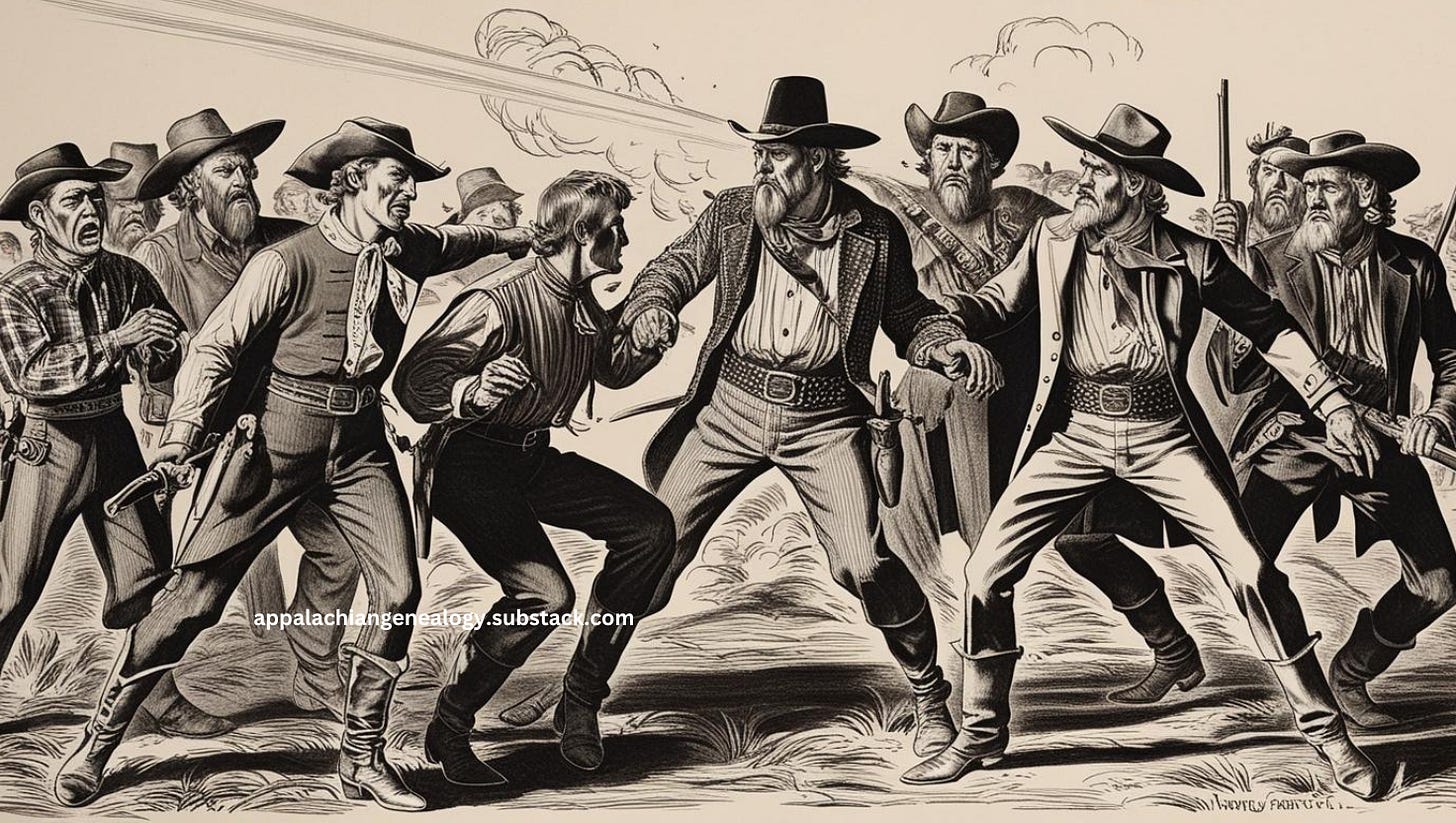Introduction
The Hatfield-McCoy feud remains one of the most infamous family conflicts in American history. Lasting from the 1860s to the late 1890s, this violent dispute between two families living along the Tug Fork River, which separates West Virginia and Kentucky, resulted in multiple deaths and became a defining example of Appalachian feuding. The origins of the conflict were complex, rooted in Civil War allegiances, economic competition, and personal grievances. This blog post explores the causes, key events, and consequences of the feud while examining its impact on Appalachian culture and law enforcement.
Causes of the Feud
The feud between the Hatfields, who primarily lived in West Virginia, and the McCoys, who resided in Kentucky, had deep-seated origins.
Civil War Divisions – The feud can be traced back to tensions from the Civil War. The Hatfields were largely Confederate sympathizers, while many McCoys fought for the Union. This ideological divide created bitterness between the families (Rice, 1982).
Land and Economic Rivalry – The Hatfields were wealthier, owning extensive timberlands and engaging in the profitable logging industry, while the McCoys had fewer resources. Economic jealousy contributed to hostilities, especially as the Hatfields prospered while many McCoys struggled (Waller, 1988).
The 1878 Hog Dispute – One of the most infamous sparks of the feud was a disagreement over a stolen pig. Randolph McCoy accused Floyd Hatfield of stealing one of his pigs, which led to a court case. The judge, a Hatfield relative, ruled in favor of Floyd Hatfield, further deepening animosity between the families (Alther, 2012).
Romantic Entanglements – Another major trigger was a doomed romance between Johnse Hatfield and Roseanna McCoy. Despite Roseanna becoming pregnant, Johnse later married her cousin, exacerbating tensions between the families (Coleman, 2019).
Escalation and Violence
The feud escalated into deadly violence throughout the 1880s.
The 1882 Election Day Killings – Three of Randolph McCoy’s sons attacked Ellison Hatfield, who later died from his injuries. In retaliation, the Hatfields executed the three McCoy brothers, intensifying the conflict (Waller, 1988).
The New Year’s Massacre (1888) – One of the most brutal incidents occurred when the Hatfields raided the McCoy home, setting it on fire and killing two of Randolph McCoy’s children. His wife was severely beaten, and the attack caused widespread outrage (Alther, 2012).
Legal Intervention and the End of the Feud – The violence prompted Kentucky and West Virginia authorities to intervene. Nine Hatfields were arrested, and trials were held in Kentucky, leading to the hanging of Ellison “Cottontop” Mounts in 1890 (Rice, 1982). The legal crackdown, along with declining family influence, eventually led to the feud’s decline.
Impact on Appalachian Culture and Law Enforcement
The Hatfield-McCoy feud had lasting effects on Appalachian society and law enforcement policies.
Stereotypes of Appalachian Violence – The media sensationalized the feud, creating an enduring stereotype of Appalachians as violent and lawless. This perception affected how the region was viewed by outsiders for generations (Coleman, 2019).
Strengthened Law Enforcement – The feud exposed weaknesses in local law enforcement, prompting state governments to take more control over regional justice. The involvement of state militias and legal prosecutions marked a shift toward stronger law enforcement structures in Appalachia (Rice, 1982).
Tourism and Cultural Legacy – Today, the feud is commemorated through historical sites, reenactments, and tourism initiatives in West Virginia and Kentucky. The Hatfield and McCoy descendants have even worked together to promote reconciliation and economic development through heritage tourism (Alther, 2012).
Conclusion
The Hatfield-McCoy feud was a complex and violent conflict fueled by economic tensions, personal vendettas, and Civil War divisions. Though it ended over a century ago, its impact on Appalachian culture, law enforcement, and national perceptions of the region persists. Understanding the historical context of the feud provides insight into the broader struggles of Appalachian communities and their fight for justice and economic survival.
References
Alther, L. (2012). Blood feud: The Hatfields and the McCoys: The epic story of murder and vengeance. Lyons Press.
Coleman, J. (2019). Hatfields and McCoys: American blood feud. History Press.
Rice, O. K. (1982). The Hatfields and the McCoys. University Press of Kentucky.
Waller, A. (1988). Feud: Hatfields, McCoys, and social change in Appalachia, 1860-1900. University of North Carolina Press.




